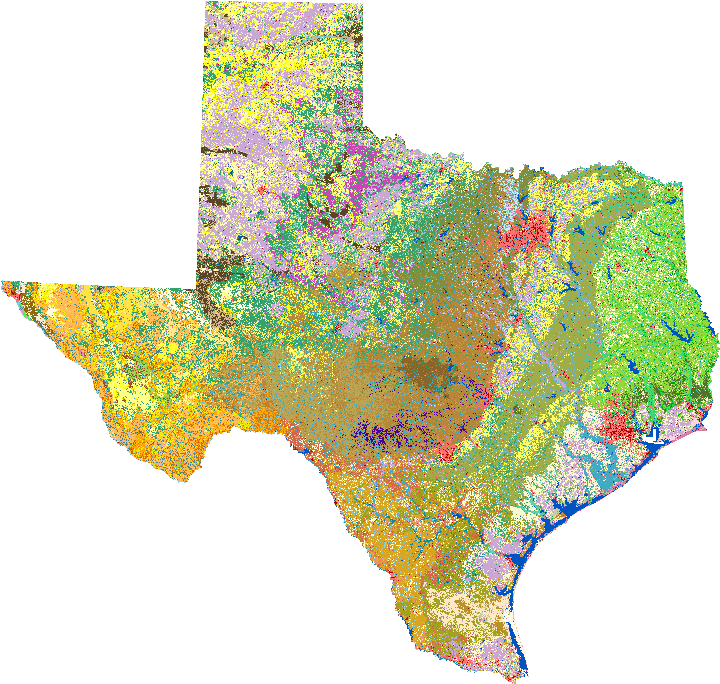| ||||||||
|
Texas Biological Survey
| ||||||||
|
| ||||||||
|
Overview
Discover Life, Sam Houston State University, Texas Parks and Wildlife, the University of Texas, Austin, the Botanical Research Institute of Texas, and others are partnering to study ecological sites in Texas. Our immediate goal is to collect baseline data on selected species to better understand and manage ecological communities.
| ||||||||
|
Physical & climatic features -- Biogeographically Texas includes components of the Great Plains, southwestern deserts, eastern forests, and northeastern Mexico.
The state has an area of 268,597 square miles (695,663 km2) and covers 8.6% of the continental United States.
Its elevation ranges from sea level, along its Gulf Coast, to its highest mountain, Guadalupe Peak, at 8,751 ft (2,667 m).
Between 1961 and 1990, its annual precipitation averaged under 14 inches (36 cm) in its extreme west to over 54 inches (137 cm) in its extreme east.
Latitudinally it ranges from 26.6°N at the southeastern tip of its border with Mexico to 36.5°N along its northern border with Oklahoma.
Its average annual temperatures range from under 55°F in its north to over 75°F in its south (13°C and 24°C, respectively).
Ecological communities -- Because of its biogeography, large size, topography, rainfall and temperature gradients, geological complexity, and soil diversity,
Texas has a species-rich biota and many distinct ecological communities between its western deserts and eastern forests.
The map on the right presents the 398 categories recognized by Texas Parks and Wildlife in their analysis of over a billion 10m x 10m grid cells of the entire state.
These communities are challenged by invasive species, urbanization, pollution, and other threats.
|
 Categories of land cover Source: Texas Parks and Wildlife Click on map for interactive version. | |||||||
|
Population & schools -- Texas is divided into 254 counties.
In 2016 its population was 27.86 million, 8.6% of the nation's 323 million.
Approximately 90% of these individuals live in the urban areas shown on the map in red,
the largest being the metropolitan areas of
Dallas-Fort Worth, Houston, San Antonio, Austin, McAllen and El Paso.
The others live in rural areas. Only about 100 live in Loving County, on the border with New Mexico,
the second least populous county in the United States.
There are over 3,700 high schools in the state, of which 88% are public and the remainder private schools.
In 2016-17, there were over 5 million students in Texas public schools (52% Hispanic, 28% White, 13% African America).
By recruiting and training high school students, college undergraduates and the general public, we hope eventually
to collect data from a dense network of replicate study sites across all counties in the state. (Except maybe Loving!)
Study design -- In 2018 we anticipate starting to collect baseline data on plants, moths, bees and ants at 12 study sites, including parks, university field stations, and private ranches. In future years we will add more study organisms and sites as resources permit. A key element our study's design is that we will use standard research protocols. These will permit high school students, undergraduates, and other participants to collect high-quality samples that will be comparable across sites and over time. Taxonomic experts will oversee the identification of all specimens documented at the sites. Thus, we should be able to see how weather, invasive species, pesticides, and other factors impact populations and their interactions within communities. Larger goals -- Our larger scientific goal is to understand how plants, insects and other organisms co-vary in their distributions over large geographic scales. We plan to determine how best to inventory sites efficiently to determine how much each site would contribute to the long-term preservation of all species. In this regard, please see Save all species. Our educational goal is to teach students and involve them in ecological research.
| ||||||||
| Updated: 22 October, 2017 | ||||||||
| Discover Life | Projects | Study sites | Top | ||||||||
| © Designed by The Polistes Corporation | ||||||||




